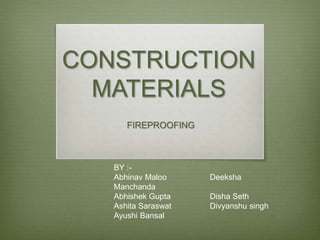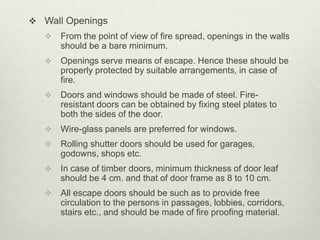This document discusses construction materials that provide fire resistance. It describes properties of ideal fire-resisting materials and divides building materials into combustible and non-combustible categories. Specific fire-resisting properties of common materials like stone, brick, concrete, steel, glass and timber are explained. The document concludes with recommendations for fire-resistant construction of walls, columns, floors, roofs, openings and strong rooms.
















